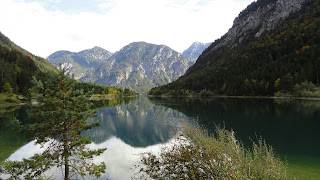The village elder went out to welcome an approaching stranger. "Welcome, friend. What brings you to Meanville?"
"I come in search of a new home," said the stranger, "having left my home in desperation. My neighbors were the most terrible people you can imagine: ignorant busy bodies, constantly making false accusations."
"That is terrible," replied the elder, "My heart goes out to you but I am sure you will find the people of Meanville are much the same as the people you left behind, perhaps even worse. The very name of our village is a testament to its people. Life is difficult here but it is all I have ever known. Farewell and best wishes that you may find a place that suits you."
The next day another stranger approached the village and the elder spoke the same welcome and asked the same question.
"I come in search of a new home," said the stranger, "having left my home in desperation. My neighbors were the most wonderful people you can imagine but the famine was so terrible that I volunteered to leave so that others might stay."
"That is terrible," replied the elder. "My heart goes out to you. I'm sure you will find the people of Meanville are much the same as the people you left behind. We mean to welcome you to our village with open arms."
Tuesday, November 30, 2010
Friday, November 26, 2010
Fifty Cents!
"Fifty cents!" exclaimed the pixie as she offered three small stones at our front door. I called to my wife "This is for you..." as I pulled some coins from my pocket. I carefully extracted two pennies from the pile but the generous one took a dime and bought the stones. The pixie ran off to join her older brother, silent partner, instigator. So the stones took their place on a shelf in the kitchen, the story told to neighbors and friends. Many laughs! And now the stones have moved into a small Waterford bowl, where they positively shine, the center of attention. These are not just common stones but our best investment ever.
Monday, November 15, 2010
Sadness and Compassion

As we were finishing a nice dinner at a restaurant in Görlitz, a begger came to us from the rear part of the restaurant. I tried to wave him off but he did not withdraw. Instead, he stared intensely at our food with the most profound and genuine sadness I have ever seen. It was as though we were eating his food, as though all hope were gone. Other diners noticed and clearly commiserated with him and it seemed as though we all might descend together into some terrible pit of sadness.
Thankfully, the head waiter noticed the beggar and spoke to him by name. Approaching our table he apologized but Margaret suggested that we would gladly give the man our abundant leftovers if that would be OK. Seeming to accept this suggestion, the waiter went to the kitchen. Waiting, I nodded to the man, indicating that something good was going to happen. He nodded vigorously in response. Then we waited a little longer until the owner or manager came from the kitchen. He, too, apologized and said, "We take care of him. He receives from us every day" and directed the man toward the rear of the restaurant.
After a while, the man came out into the restaurant again, having finished his meal, carrying his dishes to the kitchen.
And so I cannot help but wonder: how would an American restaurant deal with such a beggar? Feed him every day?
I think of a friend and classmate from elementary school: Oscar could swing higher and hit the ball farther than anyone else, mainly because he had been held back several times. He understood so little of what was taught that he left school after eighth grade, glad to be done with it. Many years ago, I asked mother what had become of Oscar. He was in prison for stealing a car, she said. He could not understand why other people could have cars and he could not. And we did not take care of him.
Monday, October 11, 2010
Scenes of Germany (and one from Prague)
The Black Forest
Saturday, October 9, 2010
Around Füssen
Linderhof Palace
Subscribe to:
Comments (Atom)


















































